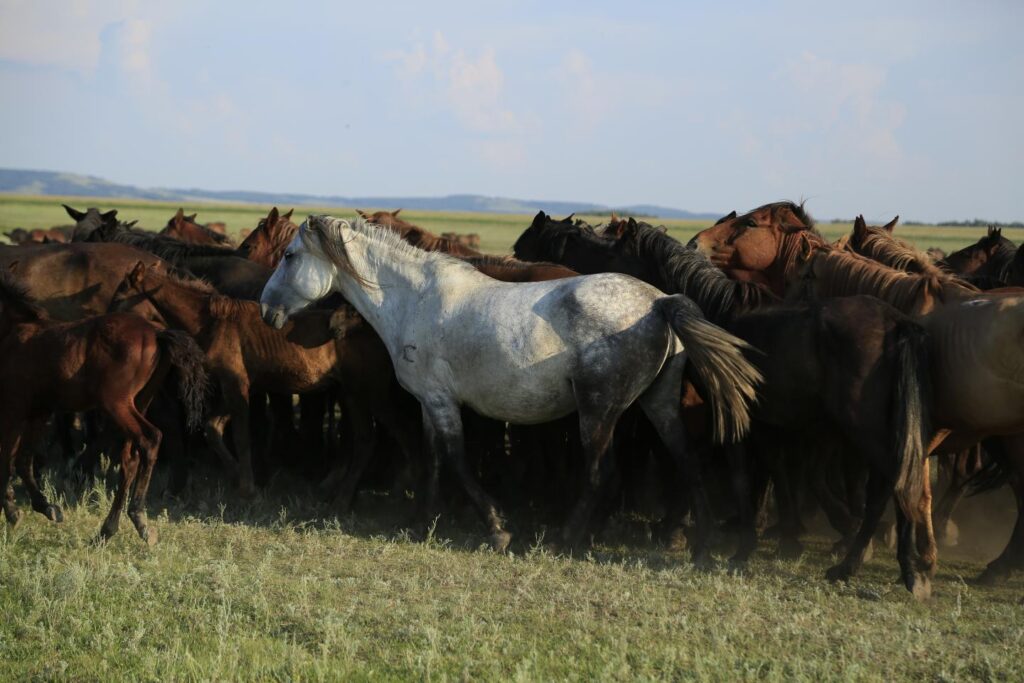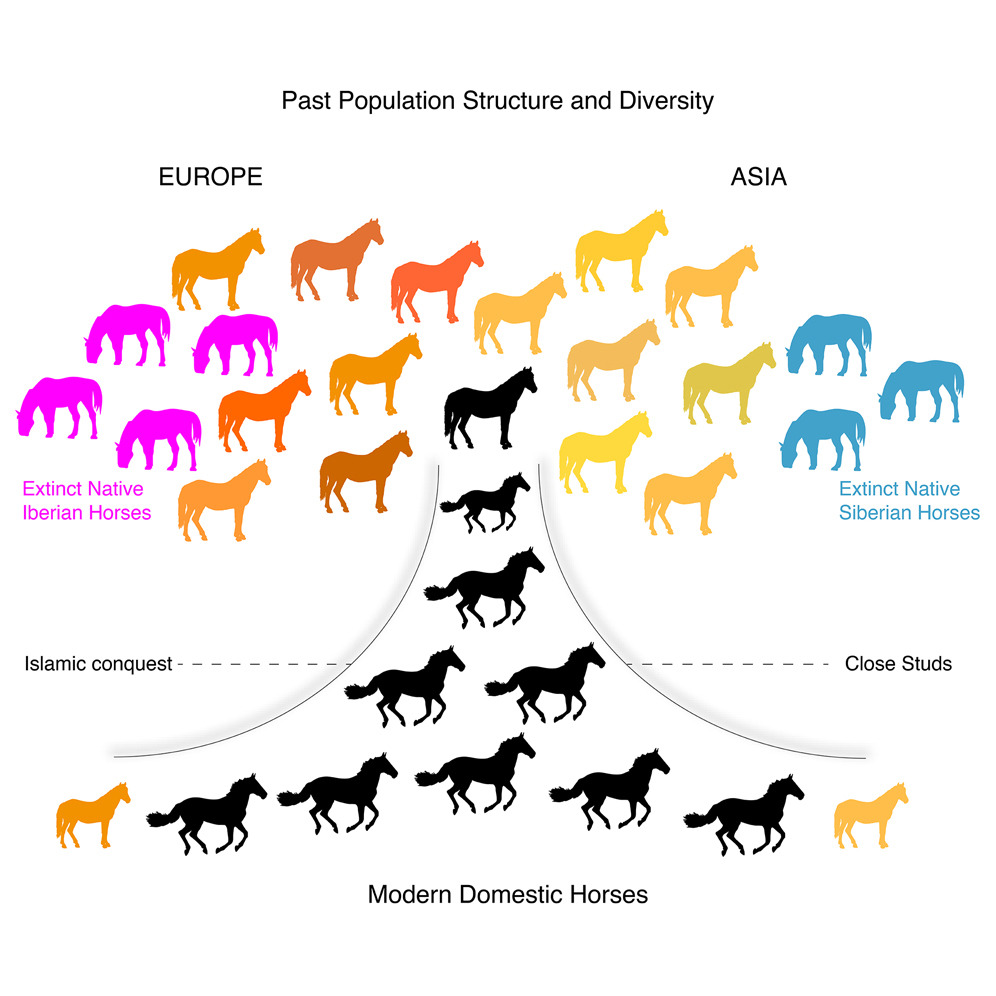
Credit: Ludovic Orlando
A new paper to which I collaborated just came out, “Tracking five millennia of horse management with extensive ancient genome time series“, which is the result of a huge collaboration between more than a hundred scientists from many different research centres around the world. The lead authors are Antoine Fages, Kristian Hanghøj and Naveed Khan, and the senior author Ludovic Orlando (University of Toulouse and University of Copenhagen).
Antoine Fages, Kristian Hanghøj, Naveed Khan, Charleen Gaunitz, Andaine Seguin-Orlando, Michela Leonardi, [116 more authors] and Ludovic Orlando
Tracking five millennia of horse management with extensive ancient genome time series
Highlights
- Two now-extinct horse lineages lived in Iberia and Siberia some 5,000 years ago
- Iberian and Siberian horses contributed limited ancestry to modern domesticates
- Oriental horses have had a strong genetic influence within the last millennium
- Modern breeding practices were accompanied by a significant drop in genetic diversity

Horse domestication revolutionized warfare and accelerated travel, trade, and the geographic expansion of languages. Here, we present the largest DNA time series for a non-human organism to date, including genome-scale data from 149 ancient animals and 129 ancient genomes (≥1-fold coverage), 87 of which are new. This extensive dataset allows us to assess the modern legacy of past equestrian civilizations. We find that two extinct horse lineages existed during early domestication, one at the far western (Iberia) and the other at the far eastern range (Siberia) of Eurasia. None of these contributed significantly to modern diversity. We show that the influence of Persian-related horse lineages increased following the Islamic conquests in Europe and Asia. Multiple alleles associated with elite-racing, including at the MSTN “speed gene,” only rose in popularity within the last millennium. Finally, the development of modern breeding impacted genetic diversity more dramatically than the previous millennia of human management.
Cell, Volume 177, Issue 6, 30 May 2019, Pages 1419-1435.e31
DOI: https://doi.org/10.1016/j.cell.2019.03.049

